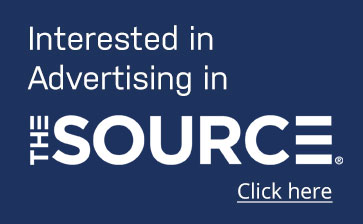Transforming hospital pharmacies from cost centers to revenue drivers
For years, hospital CEOs and CFOs have considered their pharmacies as a cost center that they need to restrain. However, shifts in the outpatient landscape are creating new opportunities to turn these pharmacies into revenue generators.

Since CMS instituted the diagnosis-related group (DRG) payment system for inpatient events, hospital CEOs and CFOs have been focused on controlling their inpatient pharmaceutical costs so they don’t exceed the payments allowed in the DRG reimbursement formula. While this approach made sense, the outpatient environment has evolved significantly, according to Jason Braithwaite, PharmD, MS, BCPS, HealthTrust’s Senior Assistant Vice President, Clinical Pharmacy Operations & Business Development.
“In the past, outpatient drug utilization was minimal,” Braithwaite explains. “But today, we’re seeing explosion of expensive outpatient medications—biologics,
infusion therapies and oncology drugs among them. Additionally, hospitals have expanded outpatient settings, including infusion centers and outpatient surgery departments.
The shift in outpatient drug spending
Over the last decade, outpatient pharmaceutical expenses have surged. “For many health systems today, over 50% of total drug spend is now outpatient, when previously it was maybe 10% to 20%,” Braithwaite says.
That increase is both good and bad. On the negative side, as drugs become more specialized and targeted, they’re more expensive for hospitals to purchase, resulting in just a few drugs driving up spend.
“A clinician might select a drug that costs $40,000 or $50,000 per dose versus the relatively low cost of generics,” he explains. “They would have to give thousands of doses for some of these generic drugs to equal one dose of an expensive biologic.”
On the plus side, he says, is reimbursement. “From a reimbursement perspective,” Braithwaite adds, “the differentiator for outpatient is that you are separately reimbursed, so you’re not subject to the DRG payment restrictions.”
Rethinking the role of outpatient pharmacy
Given these reimbursement advantages, hospital leaders should reconsider the perception of pharmacy as a cost center in the outpatient space.
“Their focus should not necessarily be on the increase in spend, but rather the reimbursement that they’re receiving from those drug administrations. We are seeing huge increases, with some health systems having whole service lines for outpatient oncology or rheumatology.”
While the opportunity for growth is great, C-suites within hospitals need to be thoughtful about realigning their focus from cost to revenue center in regard to outpatient pharmacy, Braithwaite says.
“The basic factors to consider are understanding your payers, your payer mix, your commercial versus Medicare and Medicaid mix, and the purchase or acquisition costs for the drugs. These considerations need to be understood before you can really delve into ‘Should or should we not be growing in the outpatient space,’ ” he says.
Tools for informed decision-making
To achieve that level of discernment, Braithwaite recommends pulling together the pharmacy, finance, patient financial assistance and managed care contracting teams. “You need to fully comprehend what the hospital’s business model is, what you’re winning on vs. what you’re losing on,” he explains.
HealthTrust also has tools to help those teams get fuller insights and continues to develop additional resources for members. One of those in development is a reporting tool that looks at drugs that are commonly used in members’ inpatient and outpatient settings, so members can clearly detect the spend growth in each of those segments.
Reports based on an analysis of many of the top spend drugs and the way those are covered by plan sponsors and payers are available now through the Member Portal. That resource also provides some reimbursement reporting compiled from publicly available Medicare data, but in a format that is easier to digest and consume.
“Drug manufacturers, payers, etc., are all focused on that outpatient factor, so while we absolutely emphasize cost control on the outpatient segment, health systems should also understand cost versus reimbursement and have it as a focus and growth opportunity,” Braithwaite adds. “HealthTrust is dedicated to helping members with that.”
IS YOUR PHARMACY POSITIONED TO GENERATE REVENUE?
You’ll need full visibility into your spend and reimbursements. For more information on available pharmacy tools and insights, contact your HealthTrust Account Manager or email askIHP@healthtrustpg.com





